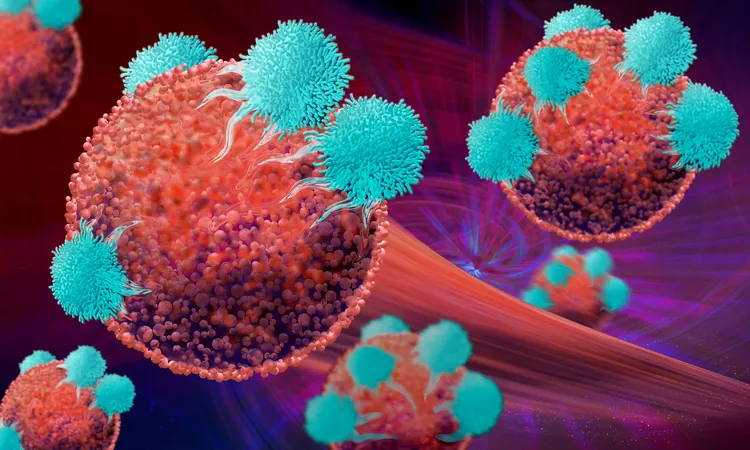
Alarming Rise of Flu-Linked Brain Disorder in Kids: What You Need to Know!
2025-08-05
Author: Jia
A Shocking Discovery in Pediatric Health!
In a groundbreaking study published by JAMA, researchers have revealed a concerning trend: acute necrotizing encephalopathy (ANE) associated with influenza is wreaking havoc on children across the U.S. This condition is rare but poses a dire threat, with an astonishing 27% mortality rate observed among pediatric cases.
Flu's Dark Side: What is ANE?
ANE is a life-threatening neurological disorder that can strike even previously healthy children after an influenza infection. Characterized by brain inflammation and critical thalamic lesions, ANE often manifests through fever, seizures, and altered mental states. Dr. Molly Wilson-Murphy emphasizes the urgency, stating, “It is incredibly important for providers to be able to recognize ANE and act immediately, as rapid treatment may save lives.”
Startling Statistics from the Study!
Analyzing 41 cases from 23 hospitals during the 2023 to 2025 influenza seasons, researchers noted that the median patient age was just 5 years, with a staggering 76% having no prior health issues. The study found that 95% of the children had influenza A, specifically the H1N1 strain. Alarmingly, only 16% of those affected had received their flu shot for that season. Out of the 11 fatalities, only one child had been vaccinated.
Symptoms and Striking Findings!
The data revealed that nearly all patients exhibited symptoms of encephalopathy and fever, with 68% suffering from seizures. Neuroimaging revealed thalamic injury in 88% of patients, along with additional complications like thrombocytopenia and elevated protein in cerebrospinal fluid. Electroencephalography indicated significant neurological slowdowns in 95% of cases.
The Grim Reality of Survival!
Despite aggressive treatments, including corticosteroids and intravenous immunoglobulin, the high mortality rate persisted. Among the survivors, at the 90-day mark, 63% faced moderate to severe disabilities—ranging from spasticity to the ongoing need for feeding support. Alarmingly, only 43% of patients regained the ability to walk independently within three months.
Urgent Call for Action!
The study underscores a massive gap in vaccination efforts against influenza. Dr. Wilson-Murphy pointed out that effective vaccination could play a critical role in preventing ANE. Reflecting on additional findings, previous studies indicated that mass vaccinations among school-aged children significantly lowered the incidence of influenza-associated encephalopathy.
A Need for Greater Awareness and Research!
Researchers are calling for enhanced public health surveillance of ANE and more research into treatment strategies. Given that many fatalities occurred just days after symptoms appeared, swift diagnosis and aggressive critical care are crucial. As Dr. Wilson-Murphy stated, “There is still so much we have yet to learn about ANE, but we hope this study has helped raise awareness and pave the way for improved recognition and groundbreaking treatments.”



 Brasil (PT)
Brasil (PT)
 Canada (EN)
Canada (EN)
 Chile (ES)
Chile (ES)
 Česko (CS)
Česko (CS)
 대한민국 (KO)
대한민국 (KO)
 España (ES)
España (ES)
 France (FR)
France (FR)
 Hong Kong (EN)
Hong Kong (EN)
 Italia (IT)
Italia (IT)
 日本 (JA)
日本 (JA)
 Magyarország (HU)
Magyarország (HU)
 Norge (NO)
Norge (NO)
 Polska (PL)
Polska (PL)
 Schweiz (DE)
Schweiz (DE)
 Singapore (EN)
Singapore (EN)
 Sverige (SV)
Sverige (SV)
 Suomi (FI)
Suomi (FI)
 Türkiye (TR)
Türkiye (TR)
 الإمارات العربية المتحدة (AR)
الإمارات العربية المتحدة (AR)